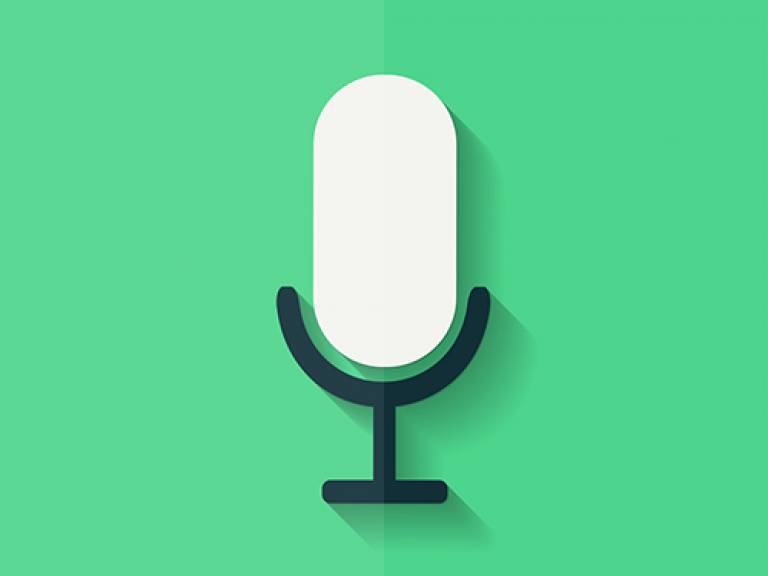5 things you need to create educational podcasts
22 May 2014

From podcasting equipment to platforms, PhD student Georgia Panteli shares her advice on creating effective audio
In just over 12 months, Comparative Literature PhD student Georgia Panteli has helped to record, edit and share two UCL podcast series that, between them, have spawned 15 episodes and generated more than 2,000 listens.
The first, Between the Lines, is a series of conversations between Professor Tim Mathews, UCL School of European Languages, Culture & Society (SELCS), and experts from the translation world, while her second project, Café Culture, offers listeners a chance to catch up on SELCS events.
Georgia had no experience of audio production or sound recording before she got started, but now, having seen how simple and inexpensive podcasts are to create – and how effective they are as educational tools – she is keen to share her advice.
Her guide is based on a presentation she delivered at a UCL Arena Summits & Horizons session
A podcast from the Cafe Culture series, produced by Georgia Panteli
1 A concept
The podcasts I help produce are based on two very different ideas. Between the Lines, for example, is designed to offer students a glimpse of what’s happening out in the field, while Cafe Culture documents an event.
I think students would also respond really well to having lectures captured as a series of podcasts, especially when it came to revision. Interviews, events, panel discussions and documentaries are all options. It depends on your objective and how much time you are prepared to spend editing.
2 An audio recorder
The hardware you need to create a podcast is easy to get hold of and simple to operate. The main piece of equipment I use is a small Zoom H1 Handy Recorder that I borrow from the Arts & Humanities department. It retails at about £80.
I also use a mini tripod to isolate it from surface vibrations and a foam cover to protect against wind distortion. Both come in an accessories pack you can buy for this model.
You can invest in external microphones, but as long as the audio recorder is positioned close to the subjects, I find the sound quality is really good.
3 Software
Audacity is a free piece of audio editing software anyone can download. I began using it without any training or prior experience and found it really easy to operate.
Even if you want to offer an ‘unedited’ interview, you are still likely to have to make some snips at the start and the end of your recording, and you may also have to convert your audio file into MP3. They’re both very simple operations.
Of course, there are also far more advanced functions you can experiment with if you choose.
Between the Lines, hosted by Professor Tim Mathews
4 A platform
We post all our podcasts to audio sharing site Soundcloud. It offers lots of advantages:
- Listeners can access it over a web browser.
- It’s easy to upload your own recordings
- It has a ready-made audience – the UCL account has half a million followers, for example.
- You can add keywords so people interested in your topic can find it.
- Listeners can post comments or questions at precise points in your recording.
- It’s easy to embed your Souncloud podcast on a UCL page.
Alternatively, if you wanted your podcast to only be made available to your students, you could post it to Moodle.
5 Publicity
I mainly use Facebook and Twitter to publicise new episodes. Interview subjects and speakers also tend to promote the podcasts through their own social media profiles.
Also, if your podcast relates to a specific discipline or interest group, making use of popular hashtags can be useful.
This enables your podcasts to serve a purpose beyond student education – building public engagement and opening up access to the UCL community.
 Close
Close

